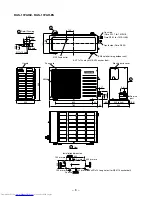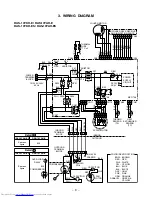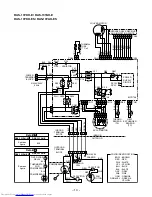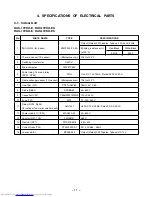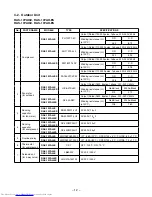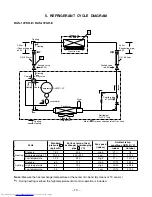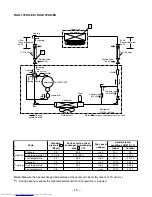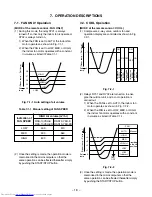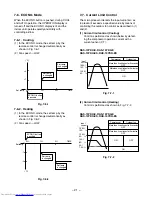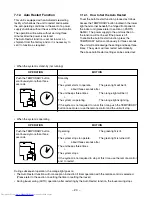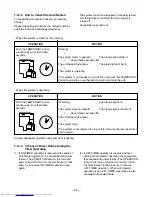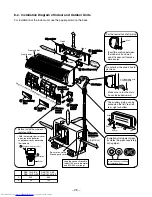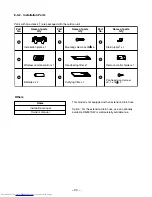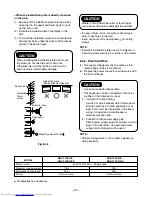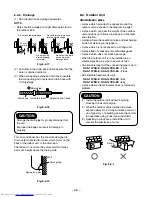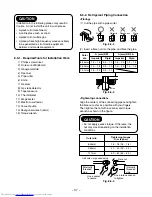
– 22 –
7-8. High-Temperature Limit Control
(Heating Operation)
The microprocessor detects the indoor heat ex-
changer temperature so as to prevent exceeding the
condensate pressure.
Control is performed as shown in Fig. 7-8-1.
60
53
52
(˚C)
Compressor,
Outdoor fan
OFF
ON
*
1 ····· Only outdoor fan is turned off.
*
1
Heat exchanger
temperature
Fig. 7-9-1
RAS-13YKH-E, RAS-13YKH-ES
Compressor
Less than 2˚C continues
for 5 minutes
OFF
ON
Outdoor fan
6
Heat exchanger
temperature
2
(˚C)
Fig. 7-8-1
7-9. Low-Temperature Limit Control
(Cooling Operation)
The microprocessor detects the indoor heat ex-
changer temperature so as to prevent freezing up the
indoor heat exchanger.
Control is performed as shown in Fig. 7-9-1 and 7-9-
2.
RAS-10YKH-E, RAS-10YKH-ES
Compressor
Less than 5˚C continues
for 5 minutes
OFF
ON
Outdoor fan
7
Heat exchanger
temperature
5
(˚C)
Fig. 7-9-2
According to the
set position
Indoor fan speed
35
32
30
20
Heat exchanger
temperature
(˚C)
U.L. (Ultra Low)
Room temp.
Set temp.
S.L (Super Low)
Room temp.
Set temp.
OFF
>
<
According to the
set position
Indoor fan speed
30
25
20
Heat exchanger
temperature
(˚C)
U.L. (Ultra Low)
Room temp.
Set temp.
S.L (Super Low)
Room temp.
Set temp.
OFF
>
<
7-10. Cool Airflow Prevention Control
(Heating Operation)
(1) During the heating operation, the indoor fan
speed is controlled automatically in accordance
with the indoor heat exchanger temperature to
prevent blowing the cool air.
Control is performed as shown in Fig. 7-10-1 and
7-10-2.
RAS-10YKH-E, RAS-10YKH-ES
Fig. 7-10-1
RAS-13YKH-E, RAS-13YKH-ES
Fig. 7-10-2
(2) As soon as the defrost operation starts, the
indoor fan stops.

